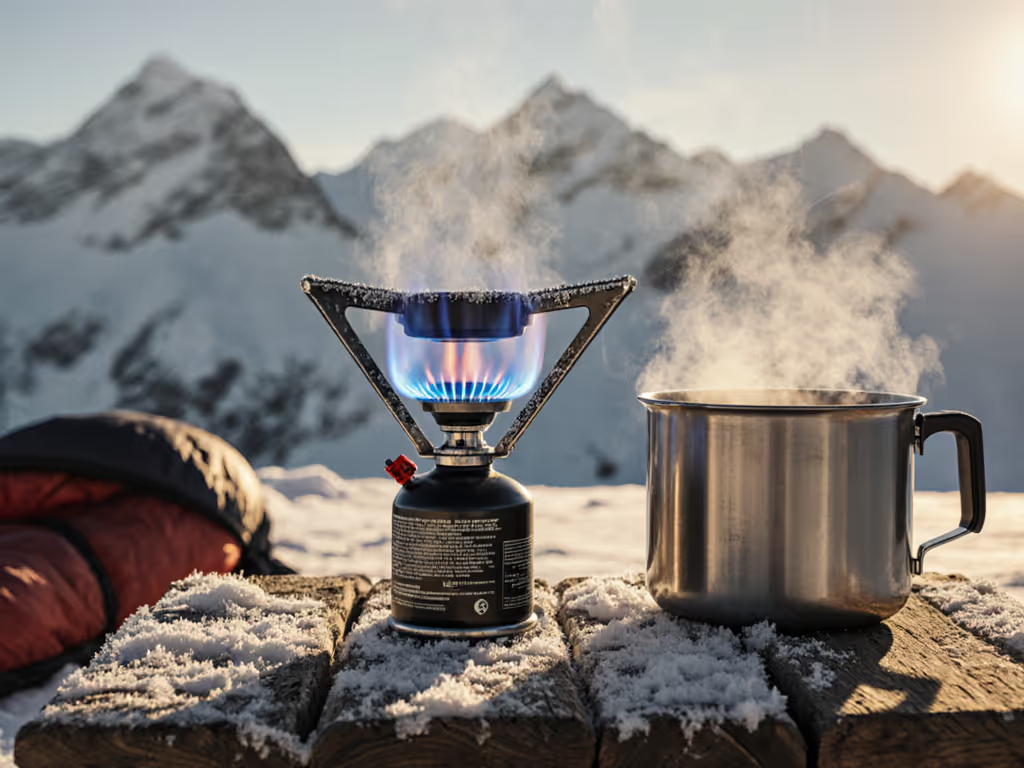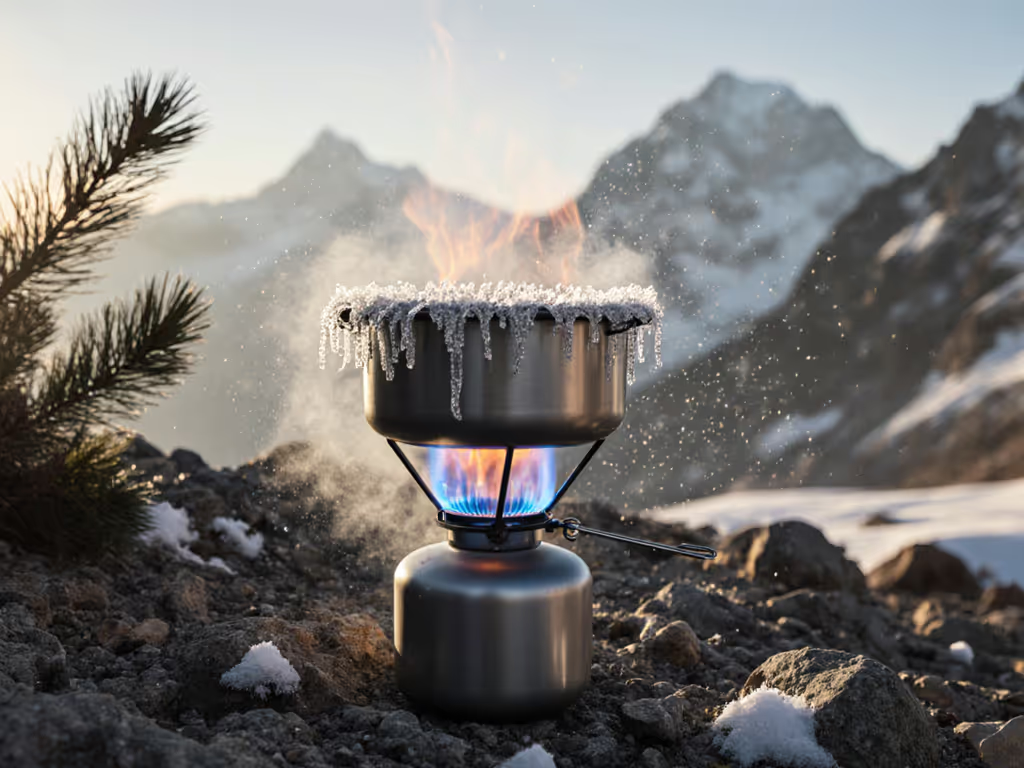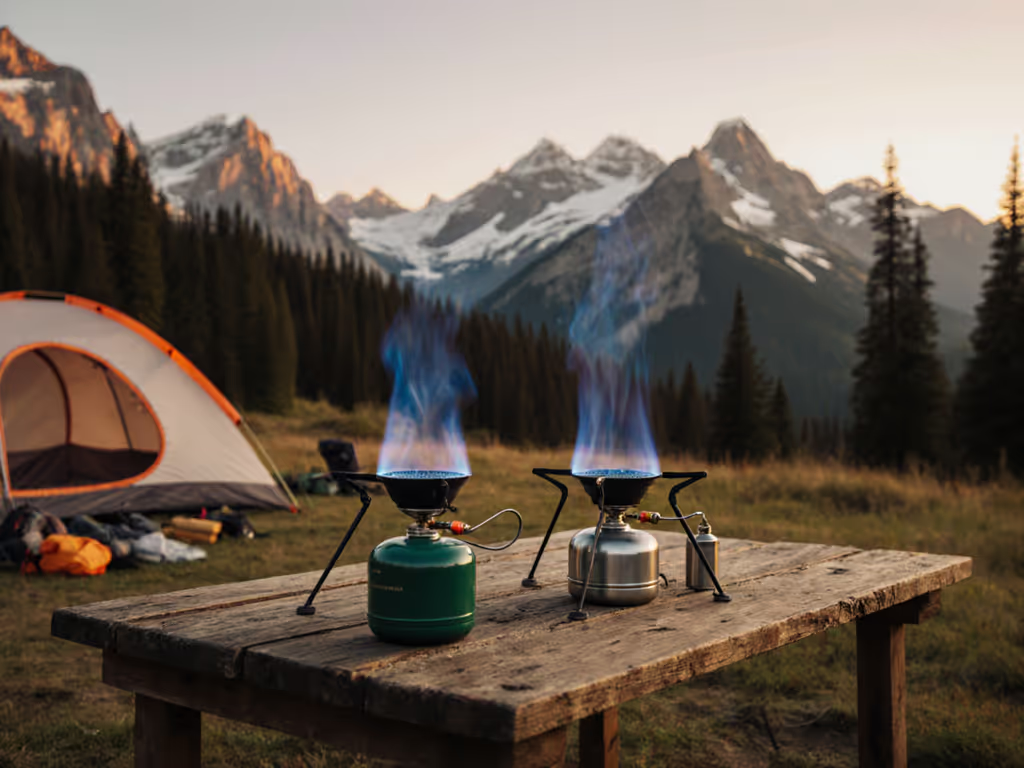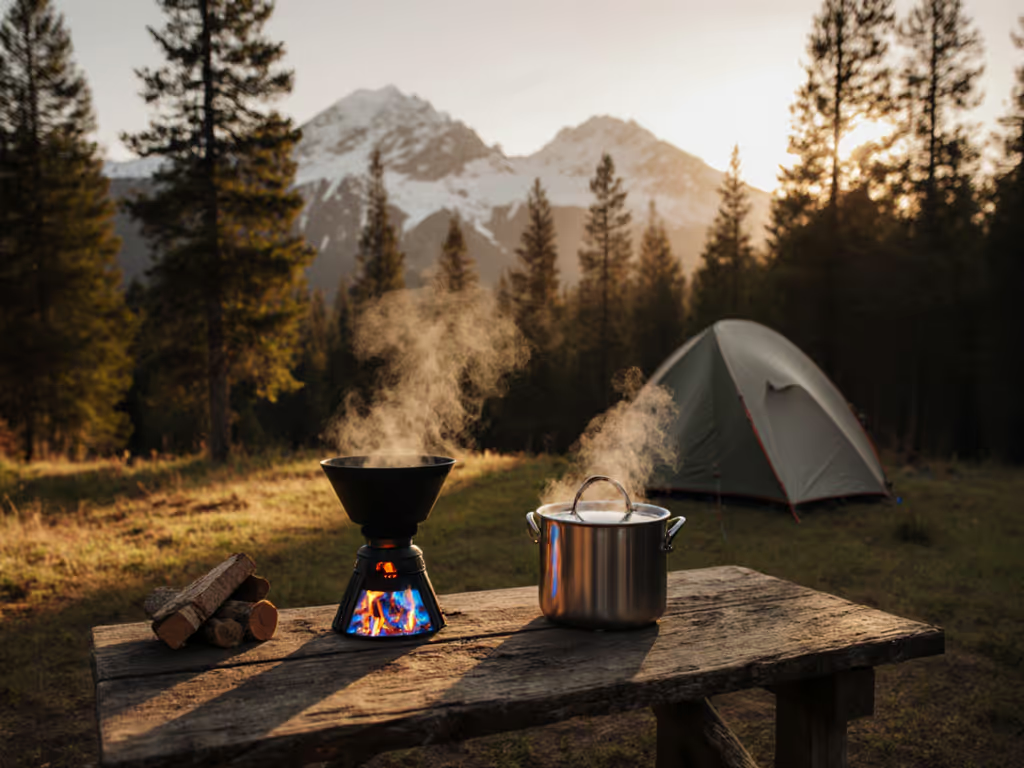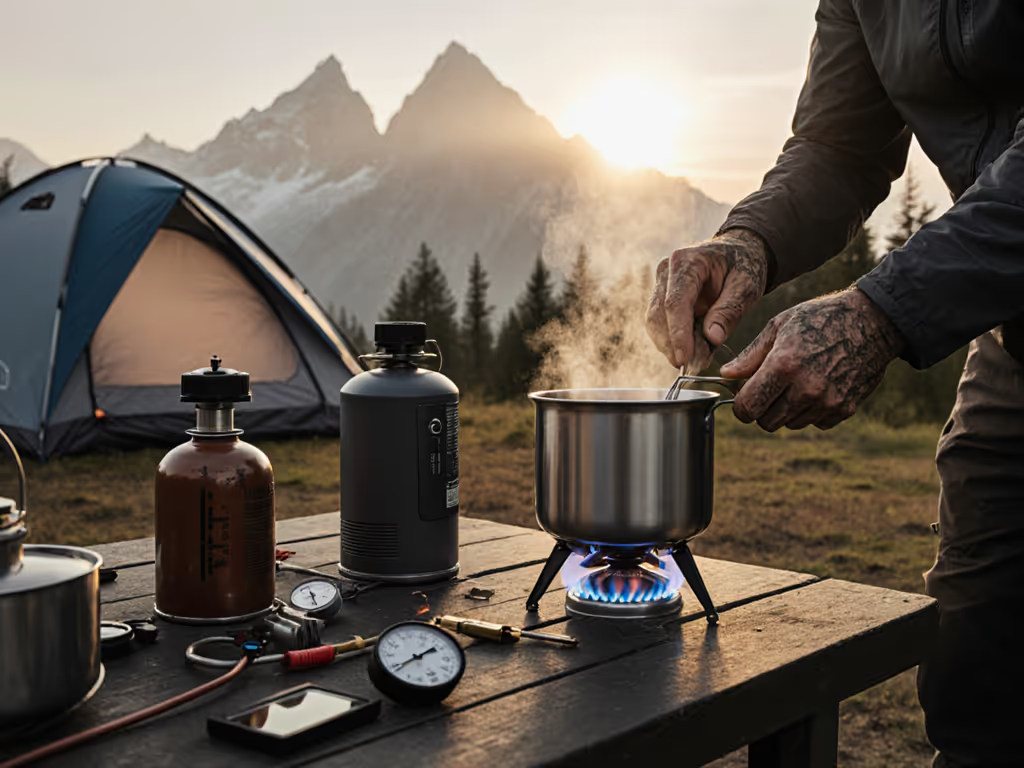
How Do I Choose the Right Stove Fuel for Subzero Temperatures? The Ultimate Cold-Weather Camp Cooking Checklist
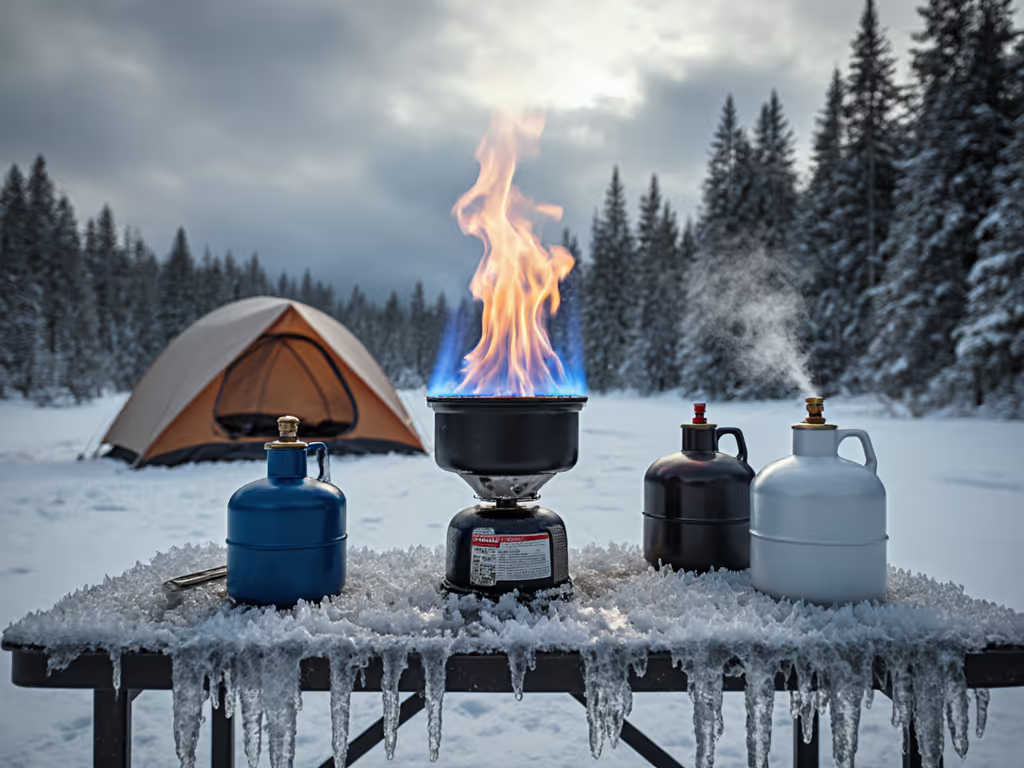
When the thermometer dives, camp cooking gets real. If you have ever wondered how do i choose the right stove fuel for subzero temperatures, you are already ahead of the game. Subzero cooking is a science of vapor pressure, wind, altitude, and smart fuel-stove pairing. In practice, that means propane or liquid fuel shines while straight butane sulks in the cold. For a deep dive into subzero fuel behavior, see our propane vs butane vs white gas performance guide. Yet there is more: the pot you use, your wind management, and your route plan all matter. In this guide, Heatinerary combines independent testing and field wisdom so you can cook fast, safe, and reliably on any winter trip.
how do i choose the right stove fuel for subzero temperatures?
Start by mapping your cold reality: the true overnight low, wind exposure, and elevation. Below roughly -7 degrees Celsius (C) to -12 degrees Celsius (C), isobutane canisters weaken, and pure propane or liquid fuel options step forward. Below -18 degrees Celsius (C), remote canister stoves with inverted canister feeds or white gas become the dependable standards. Ask yourself: are you melting snow for all water, or just boiling for meals? Melting snow adds large energy overhead and may push you toward higher-output systems.
Next, consider stove architecture. Upright canister stoves depend on vapor pressure inside the canister; in deep cold, they sputter. Remote canister stoves with a preheat tube can run the canister upside down to feed liquid fuel, restoring pressure and power. Classic white gas (naphtha) stoves excel in extreme cold with hand-pumped pressure and a priming step, ideal for expeditions. Finally, match cookware: heat-exchanger pots, tight-fitting lids, and real windscreens can reduce fuel use by 20 to 30 percent, according to manufacturer data and independent lab results. If you're deciding between systems, compare canister vs liquid fuel for winter reliability and ease of use.
To make it easy, define a decision trigger. If your lowest expected temperature is warmer than -7 degrees Celsius (C), a high-propane canister blend in an efficient integrated stove can work. Between -7 degrees Celsius (C) and -20 degrees Celsius (C), use a remote canister stove with inverted canister feed or switch to white gas. Colder than -20 degrees Celsius (C) or on multi-day snow-melting missions, white gas or multi-fuel expedition stoves are your reliable workhorses. Heatinerary’s Trip-Tuned Stove Lab provides personalized recommendations tailored to your route, forecast, and priorities, turning guesswork into a precise match.
What happens to common stove fuels below freezing?
Cold throttles vapor pressure, the invisible push that drives canister stoves. Every fuel has a boiling point; below it, the fuel struggles to vaporize. N-butane is the first to falter near 0 degrees Celsius (C). Isobutane holds out longer, while propane laughs at the cold down to roughly -42 degrees Celsius (C). Liquid fuels like white gas do not rely on ambient vapor pressure; you pump them, preheat the generator tube, and they roar to life even in brutal cold. That is why ski patrols, mountaineers, and winter scientists trust them when temperatures nosedive. For complete cold-weather fuel rankings and trade-offs, check our subzero fuel comparison.
Watch This Helpful Video
To help you better understand how do i choose the right stove fuel for subzero temperatures, we've included this informative video from REI. It provides valuable insights and visual demonstrations that complement the written content.
The physics has practical consequences. Upright canister stoves see frosty pressure drops as the canister chills during use, compounding performance loss. A canister may start strong then fade mid-pot, leaving you with half-melted snow and a long wait. Remote canister stoves with a preheat loop can flip the canister upside down to feed liquid fuel through a warmed tube, stabilizing output. Winds and altitude amplify the issue: wind strips heat from the pot and burner, while higher elevation slightly lowers boiling temperatures but also reduces convective losses. Managing those forces is as important as fuel choice.
Fuel Characteristics Relevant to Subzero Performance
| Fuel | Boiling Point | Usable Temp Without Tricks | Best Practice Below Freezing | Notes |
|---|---|---|---|---|
| N-Butane | About -0.5 degrees Celsius (C) | Above 5 degrees Celsius (C) | Avoid for cold; performance collapses | Common in cheap canisters; weak in cold |
| Isobutane | About -12 degrees Celsius (C) | Down to about -7 degrees Celsius (C) | Use high-isobutane blends; keep canister warm | Better than n-butane; still limited |
| Propane | About -42 degrees Celsius (C) | Down to about -30 degrees Celsius (C) | Use remote canister or 1-pound cylinder with proper stove | Strong vapor pressure in cold; heavier containers |
| White Gas (Naphtha) | N/A, pumped liquid | Excellent to extreme cold | Prime and pump; expedition standard | High output, field-repairable |
| Kerosene | N/A, pumped liquid | Excellent to extreme cold | Requires thorough preheating | Sootier, but stable and energy dense |
| Alcohol (Ethanol/Methanol) | N/A | Poor in deep cold | Use only for emergency or minimalist warm trips | Low heat output; hard to light cold |
| Solid Fuel (Hexamine) | N/A | Marginal | Simplicity only; very slow in cold | Backup, not primary, in winter |
What about blends? Many canisters mix isobutane and propane. A 70-30 isobutane-propane blend extends performance, but as propane burns off first, the mixture inside the canister becomes richer in isobutane and vapor pressure falls. This is why even good blends fade late in the trip during cold mornings. You can mitigate this with canister rotation, starting a new canister at the coldest time, or using an inverted-canister stove that draws liquid evenly. Independent comparisons of published cold-chamber tests show that in a -15 degrees Celsius (C) wind tunnel, inverted canisters keep output close to white gas stoves once warmed properly.
Which stove types perform best in extreme cold?
The right architecture is half the battle. Upright canister stoves are fast and simple but rely on canister vapor pressure. They excel in shoulder seasons and mild winter days but falter as temperatures plunge. Integrated canister systems with heat-exchanger pots improve efficiency and wind resistance, gaining you precious minutes and grams of fuel, yet they still depend on the canister staying warm. When the mercury drops, remote canister stoves with a preheat tube, run in inverted mode, become a sweet spot for weight, speed, and safety.
Liquid fuel stoves dominate the truly frigid end. White gas stoves use a pump to pressurize the bottle and a priming step to vaporize fuel in a generator tube. Once running, they are consistent, powerful, and largely indifferent to ambient temperature. Kerosene variants add stability and availability in some regions, albeit with more soot. Multi-fuel expedition stoves handle white gas, kerosene, and sometimes canister fuels, offering flexibility for remote routes and international travel. They demand practice but reward you with reliable hot meals when conditions turn harsh.
To ground this in real outcomes, consider three scenarios. A weekend backpack at -10 degrees Celsius (C): choose a remote canister stove with an inverted feed and a 70 to 30 isobutane-propane canister, plus a windscreen. A high plateau traverse at -20 degrees Celsius (C) with snow melting every day: run a white gas stove with a 1.5 liter heat-exchanger pot and bring a repair kit. Family car camping at -12 degrees Celsius (C): a propane stove using a 1-pound cylinder and a stable base makes breakfast easy. Heatinerary’s Trip-Tuned Stove Lab encodes hundreds of such permutations, so your pick fits your exact trip, not a generic average.
Stove Architectures vs. Subzero Use
| Stove Type | Typical Fuel | Cold Performance | Pros | Cons | Best Use |
|---|---|---|---|---|---|
| Upright Canister | Isobutane/Propane | Fair to poor below -7 degrees Celsius (C) | Light, simple, fast setup | Pressure drops in cold, wind sensitive | Cool weather, short trips |
| Integrated Canister System | Isobutane/Propane | Better, but still canister-limited | Efficient, wind-resistant, fast boil | Performance fades as canister chills | Shoulder season, mild winter |
| Remote Canister (Inverted) | Isobutane/Propane | Good down to -20 degrees Celsius (C) | Stable output, safer windscreen use | More parts, technique required | Winter backpacking to moderate cold |
| White Gas Liquid Fuel | White Gas (Naphtha) | Excellent to extreme cold | High output, consistent, field repairable | Priming needed, heavier | Expeditions, daily snow melting |
| Multi-Fuel Expedition | White Gas/Kerosene/Canister | Excellent | Versatile, global fuel options | Learning curve, maintenance | Remote, long-duration trips |
| Alcohol/Solid Fuel | Ethanol/Methanol/Hexamine | Poor | Simple, silent | Low heat, unreliable in cold | Backup only |
How much fuel should I pack for subzero trips?
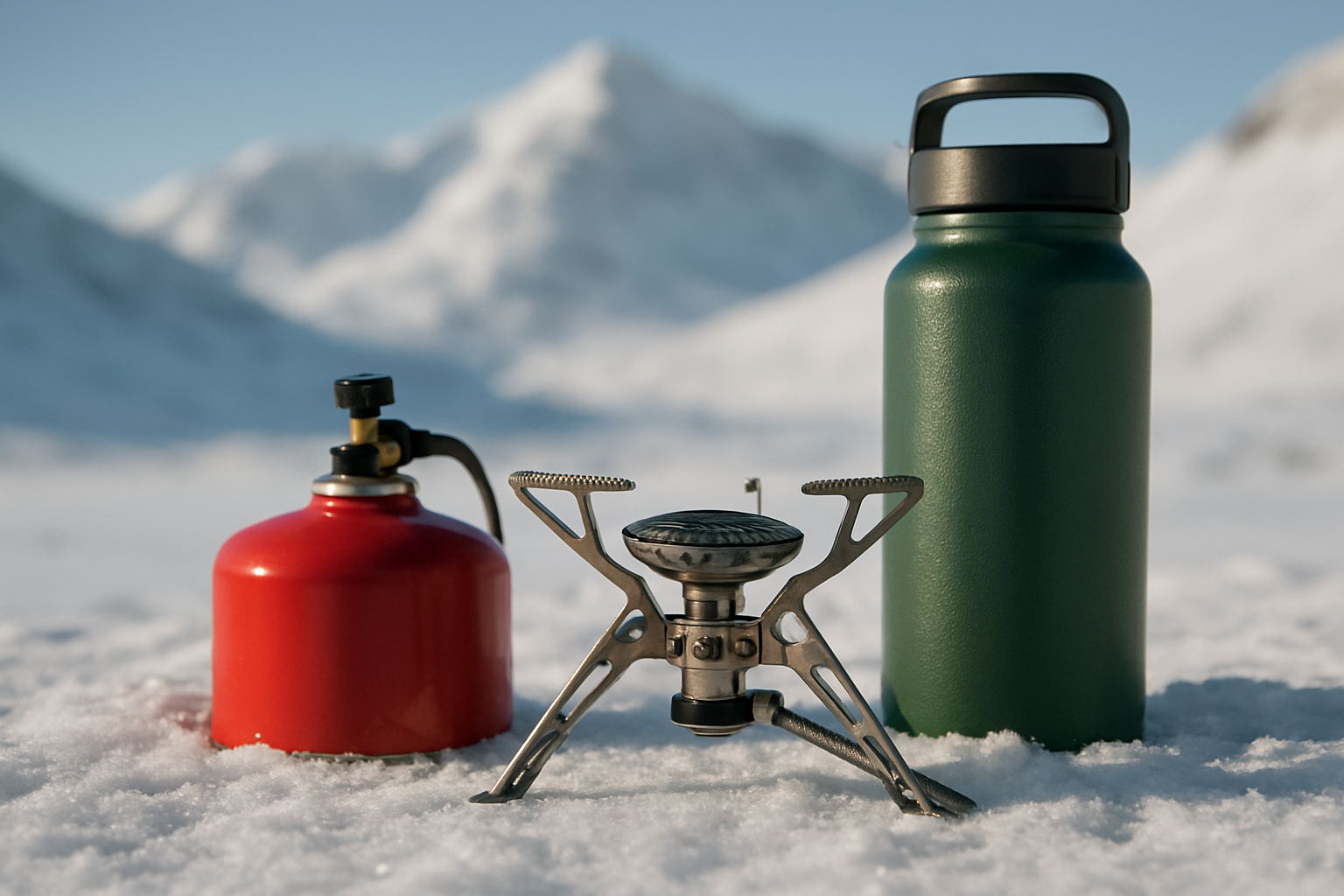
Fuel planning starts with physics but ends with conservative margins. Melting snow and bringing it to a boil is energy intensive: you pay to melt the ice, warm the water to 100 degrees Celsius (C), and sometimes keep it simmering. Lab and field data suggest that melting one liter of snow to a rolling boil typically consumes 14 to 20 grams of canister gas with an efficient integrated system in mild cold, but 25 to 40 grams in deeper cold or wind. White gas systems show similar total energy usage but may deliver steadier performance when temperatures are brutally low.
For practical planning, translate those numbers into user-friendly rules. On cold trips with no snow melting, expect roughly 30 to 60 grams of canister gas per person per day for hot drinks and meals if you cook efficiently. If you are melting snow for all water, plan 90 to 150 grams per person per day, depending on wind, pot choice, and your menu. For white gas, that often equates to 3 to 6 fluid ounces per person per day for heavy snow melt, tapering to 1.5 to 3 fluid ounces when not melting much snow. Always add a 20 to 30 percent buffer for delays and extra hot drinks.
Subzero Fuel Planning Guidelines
| Trip Context | Per Person Per Day (Canister Gas) | Per Person Per Day (White Gas) | Assumptions |
|---|---|---|---|
| No snow melt, simple boil-only menu | 30 to 60 grams | 1.5 to 3 fluid ounces | Wind managed, lidded pot, limited simmer |
| Partial snow melt for water | 60 to 100 grams | 3 to 4.5 fluid ounces | Some simmering, moderate wind |
| Full snow melt for all water | 90 to 150 grams | 4.5 to 6 fluid ounces | Wind, sub -15 degrees Celsius (C) mornings |
| Group cooking, heat-exchanger pot | Lower end of ranges | Lower end of ranges | Efficiency gains from larger pots |
Want to sanity-check the math? Count your expected liters per day and multiply by a realistic grams-per-liter figure based on your setup. Efficient integrated canister systems might average 12 to 18 grams per liter in moderate cold; inverted canister stoves and white gas with a windscreen often sit around 15 to 25 grams per liter when snow melting dominates. Add extra for simmer-heavy meals, poor wind protection, or teaching moments where your group practices stove skills. Heatinerary’s Trip-Tuned Stove Lab takes your route, expected water source, and cookware into account to forecast a personalized fuel budget with a safety margin you choose.
What safety and usability risks increase in the cold?
Cold weather magnifies small mistakes. Windscreens are critical but must be used correctly. Never wrap a windscreen tightly around an upright canister stove; trapped heat can over-pressurize the canister. Remote canister and liquid fuel stoves, with the fuel source offset from the burner, handle windscreens far more safely. Stable bases prevent tip-overs on packed snow; carve a platform or use a stove board. Frostbitten fingers fumble tasks, so pre-stage your setup and rehearse with gloves on before you are hungry.
Lighting can also be tricky. Piezo igniters often fail in cold and at altitude; carry two backups such as a flint striker and stormproof matches. Priming white gas requires attention: keep flammables away, prime with a small amount of fuel or alcohol, and watch for yellow priming flames before the jet settles into a blue burn. Ventilation is non-negotiable. Stoves produce CO (carbon monoxide); never run a stove in a closed tent. Review essential camp stove CO safety before any vestibule cooking. If you must cook in a vestibule in severe weather, maximize airflow and use a carbon monoxide alarm designed for backcountry use if you have one.
Fuel handling needs extra care. Do not over-warm canisters; hand warmth or storing the canister inside your jacket for a few minutes is fine, but never use open flames, boiling water, or sleeping bag warming. With liquid fuels, inspect seals and pump systems before every trip and bring spare parts. Keep fuel bottles out of direct flame and away from heaters. Finally, plan for pot stability and spillage; a wide heat-exchanger pot with locking pot support is more forgiving when the ground is lumpy or when mittens make finesse difficult.
What does a cold-weather camp cooking checklist look like?
Checklists prevent cold corners from becoming frustrations. Start with the stove-fuel-core trio matched to your lowest expected temperature. For mildly subzero trips, an integrated canister system with a high-propane blend may suffice. For deeper cold, pick a remote canister stove with inverted feed or a white gas or multi-fuel stove. Next, choose cookware that multiplies your fuel: a 1 to 1.5 liter pot for solo or duo use, 1.5 to 2.5 liters for groups, ideally with a heat-exchanger and tight lid. Add a real windscreen and a base board to keep stoves off snow.
Round it out with small items that make a big difference. Pack two reliable ignition sources and keep one warm in an inner pocket. Include a repair kit with spare jets, pump cup, wrenches, and lubricants for liquid fuel stoves, or spare O-rings and a tool for canister stoves. Bring a lightweight thermometer to validate campsite lows and a fuel scale to track canister consumption. Plan menus that favor boil-and-steep over long simmers. For snow melting, designate one clean scoop for snow and keep it off the ground to avoid debris that flavors your tea or clogs your pot.
- Confirm lowest expected temperature, wind, and elevation for each night.
- Select stove architecture suited to that low: upright canister, remote inverted canister, white gas, or multi-fuel.
- Choose fuel: high-propane blend, 1-pound propane cylinder, white gas, or kerosene, matching availability and cold performance.
- Pick cookware: heat-exchanger pot, secure lid, stable base; size for group efficiency.
- Pack a windscreen appropriate to your stove type and practice safe use.
- Plan water: how much snow will you melt vs. liquid water sources?
- Estimate fuel with conservative margins; weigh canisters and log usage daily.
- Carry two ignition methods and keep one warm and dry.
- Bring a repair kit and know how to service your stove in gloves.
- Stage a sheltered cooking spot: carved snow platform, windbreak, and ventilation plan to minimize CO (carbon monoxide) risk.
Can you share real-world examples and how Heatinerary helps?
Case study 1: A two-person ski tour in the Rockies across three nights at -15 degrees Celsius (C) with wind. The team used a remote canister stove with inverted feed, a 1.7 liter heat-exchanger pot, and 70 to 30 isobutane-propane canisters. They packed 240 grams of gas per person and returned with 60 grams each, thanks to diligent windscreens and boil-only meals. Heatinerary’s Trip-Tuned Stove Lab predicted 195 to 260 grams per person based on their route and menu, giving them confidence to carry just enough without stress.
Case study 2: A Denali expedition team expecting -25 degrees Celsius (C) lows and full snow melting. They ran white gas stoves with daily maintenance and carried 5 liters of fuel for 12 days for three climbers, aligned with our 4.5 to 6 fluid ounces per person per day guidance. When a storm delayed travel, their 25 percent buffer meant hot drinks were never in doubt. Heatinerary’s Trip-Tuned Stove Lab guidance flagged their prime-and-run schedule and recommended a second repair kit, which paid off when a pump seal stiffened on day eight.
Case study 3: A family car camping weekend at -10 degrees Celsius (C). They chose a stable propane stove with a windscreen and a 1-pound cylinder, backed by a simple upright canister stove kept warm in the car. Breakfast was quick, and hot cocoa morale stayed high. In all three, the common thread is not guesswork but matching. Heatinerary specializes in that match, with comprehensive stove reviews, side-by-side fuel comparisons in subzero performance, and expert guidance for both family trips and backpacking missions.
What are expert tips to maximize efficiency and reliability in the cold?
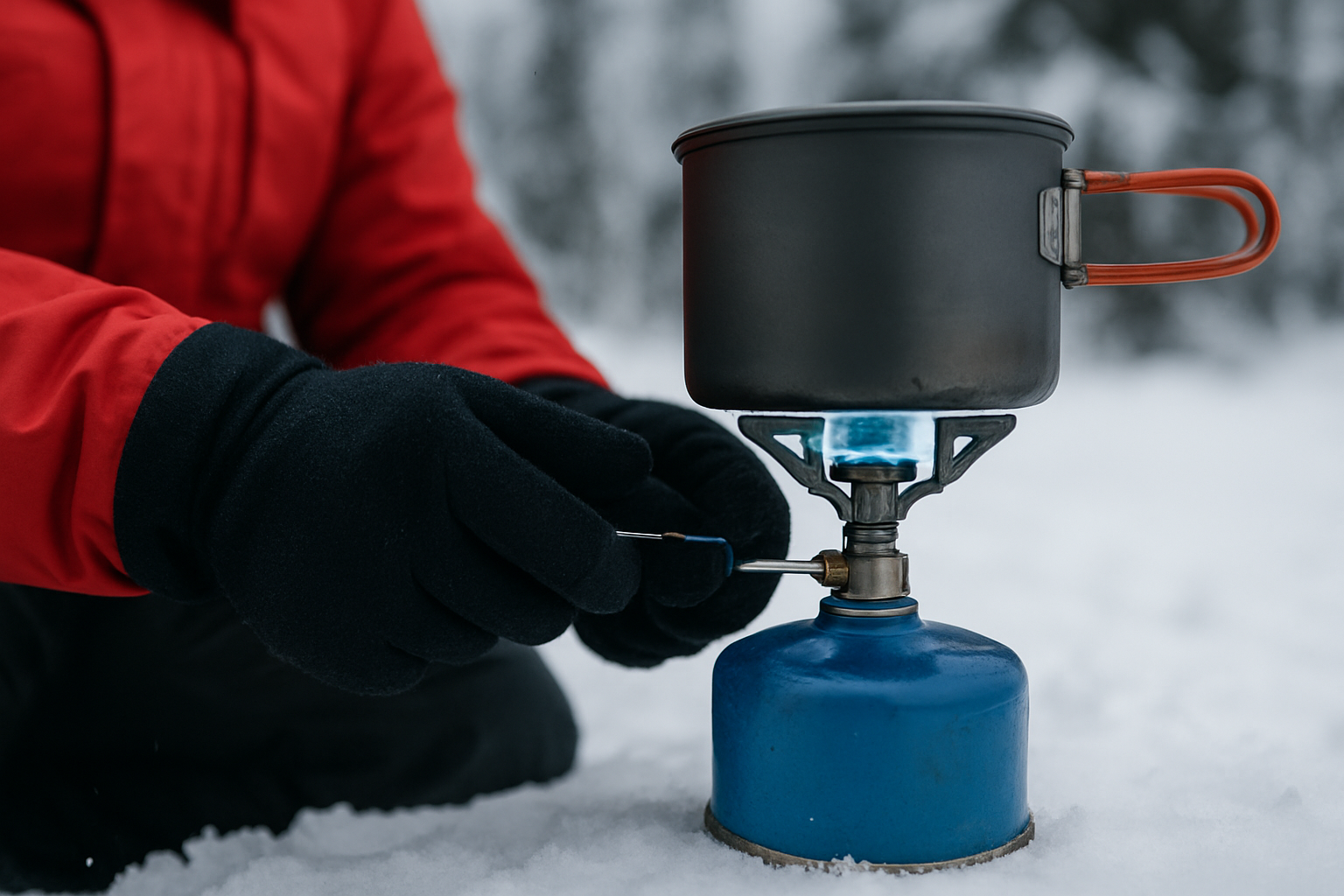
Small habits add up. Start with smart staging: keep your canister or fuel bottle warm until use, then shield the stove from wind with a safe windscreen or natural barriers. Pre-heat water using sun-warmed bottles under your jacket when feasible. Use a lid always, and opt for heat-exchanger pots that transfer more burner heat into your dinner. If you can, group-cook to leverage larger pot efficiency and reduce total burner minutes.
Mind your technique. With inverted canister stoves, begin in upright mode until the preheat tube is hot, then flip the canister gently to liquid-feed. With white gas, practice priming at home so the transition from yellow priming flame to steady blue burn becomes automatic. Time your meals for consolidation; boil once for multiple tasks to avoid repeated startups. Track canister weights each day so you know remaining grams. These small acts can save 20 to 40 percent fuel across a trip, based on industry tests and Heatinerary’s analyses of published data.
Finally, think ahead about failure modes. What if your piezo fails, the wind rises, or a seal weeps? Carry redundant ignition, a micro-toolkit, and a backup fuel option such as a small solid fuel tab for emergency ignition or priming. Choose food that tolerates variability: meals that rehydrate quickly and hot drinks that boost morale. And remember, your plan is as strong as your context. Heatinerary’s Trip-Tuned Stove Lab converts your route, forecast, and group size into an exact stove-fuel-cookware pairing, so you do not have to gamble on what will work when it is -20 degrees Celsius (C) and blowing sideways.
Why is Heatinerary a trusted guide for cold-weather stove choices?
Campers and outdoor enthusiasts often lack reliable information on which stove setups work best in specific environments and weather. Heatinerary fills that gap with testing aggregation and translation. Our comprehensive reviews and guides compare stove fuels for subzero performance, evaluate cooking efficiency at varying weather and elevations, and surface the best options for families and backpackers alike. We analyze published controlled-condition tests and combine them with real-storm field experience, looking at boil times, simmer control, wind stability, and total fuel consumed per liter of water.
The cornerstone is our Trip-Tuned Stove Lab, a system that blends forecast data, route profiles, menu plans, and group sizes to recommend a precise match for stove, fuel, and cookware. It outputs a fuel budget, efficiency tips, and a repair checklist tailored to your trip. Instead of relying on warmed-garage claims or summer marketing, you get actionable numbers for your cold reality. That is why winter guides and first-time snow campers alike use Heatinerary when the main question is reliability, not hype.
What are the quick answers to common cold-fuel questions?
- Is propane better than isobutane in the cold? Yes. Propane maintains higher vapor pressure down to roughly -42 degrees Celsius (C). Isobutane fades around -12 degrees Celsius (C).
- Can I safely warm a canister? Yes, with body heat or a lukewarm water bath below hand-hot. Never use open flames or boiling water.
- Do regulators solve cold issues? Pressure regulators help with consistent output as canister pressure falls, but they cannot create vapor pressure below a fuel’s limits.
- Is white gas overkill for -5 degrees Celsius (C)? Not necessarily. It is heavier and fussier, but if you are melting lots of snow or cooking for a group, its consistency can be worth it.
- What pot should I use? A lidded heat-exchanger pot in the 1 to 2 liter range for small groups delivers big gains in fuel efficiency and wind resilience.
- How do I test at home? Weigh your canister, boil a known volume of cold water with your winter setup in a breezy backyard, then re-weigh. Project grams per liter to your route.
Choosing fuel and stoves for real cold is part science, part craft, and 100 percent planning. By now, you have the big levers: fuel properties, stove architectures, cookware efficiency, and safety. Still, the last 10 percent is trip-specific: your weather window, group habits, and campsite realities. Heatinerary’s Trip-Tuned Stove Lab exists to turn that last 10 percent into confident, warm meals when it matters most.
Final thoughts
The promise is simple: you now know how do i choose the right stove fuel for subzero temperatures and turn bitter cold into reliable hot meals.
Imagine checking a route-specific plan that predicts fuel use, flags wind risks, and locks in the stove-cookware combo that fits your exact forecast. In the next 12 months, winter trips will feel shorter and warmer when your system hums.
What will you cook first when your stove lights instantly at -20 degrees Celsius (C) and your pot boils before the stars even fade?
Additional Resources
Explore these authoritative resources to dive deeper into how do i choose the right stove fuel for subzero temperatures.
- What fuel is best for boiling or cooking in sub-zero temperatures?
- Sub-Zero Shootout - Stove Fuels Head to Head in Cold Weather!
Match Cold-Weather Fuel With Heatinerary
Heatinerary’s Trip-Tuned Stove Lab provides tailored recommendations for stoves, fuels, and cookware based on route, season, and weather, ensuring safe and efficient cooking anywhere for campers, backpackers, and outdoor enthusiasts.

